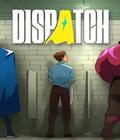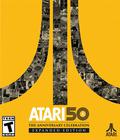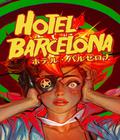
Genre: Platforming
Publisher: Ubi Soft
Developer: Ubi Soft
Release Date: 03/04/2003
 It may appear as if Rayman is being spread a bit thin these days, what with Rayman 3 making a home for itself on every major platform. Don’t believe it, Rayman 3 on the Game Boy Advance may share the same storyline and protagonists as its multi-console brethren but the 2D side-scrolling action found in this version takes a completely different approach than its 3D counterparts. As a matter of fact, Rayman’s latest outing on Nintendo’s nifty handheld is the first 2D Rayman game to be released since the original back in the mid-90’s (on the Atari Jaguar, Saturn, Playstation, and PC), which was re-released as a GBA launch game a couple years ago. This completely original game offers up new levels, new characters, and new special powers, but the same colorful capricious style that made the franchise so popular and venerated to begin with. Rayman fans rejoice, for the limbless wonder hath returned, and in all his 2D splendor.
It may appear as if Rayman is being spread a bit thin these days, what with Rayman 3 making a home for itself on every major platform. Don’t believe it, Rayman 3 on the Game Boy Advance may share the same storyline and protagonists as its multi-console brethren but the 2D side-scrolling action found in this version takes a completely different approach than its 3D counterparts. As a matter of fact, Rayman’s latest outing on Nintendo’s nifty handheld is the first 2D Rayman game to be released since the original back in the mid-90’s (on the Atari Jaguar, Saturn, Playstation, and PC), which was re-released as a GBA launch game a couple years ago. This completely original game offers up new levels, new characters, and new special powers, but the same colorful capricious style that made the franchise so popular and venerated to begin with. Rayman fans rejoice, for the limbless wonder hath returned, and in all his 2D splendor.
The storyline in Rayman 3 GBA is based on the plot found in the 3D console games of the same name, but with a slight difference. Like the 128-bit Rayman 3 titles, you must save your best friend Globox after he inadvertently swallows a dark lum. The difference is, in this game Admiral Razor Beard, the bad guy from Rayman 2: The Great Escape, reprises his role as antagonist. This time around, Razor Beard seeks to harness the potential power of the aforementioned dark lum, in the hope of using the “captured” lum to achieve his dastardly, planet-ruling plans, or something to that effect.
The story isn’t what makes Rayman 3 such a great game, instead the ever-evolving gameplay, highly creative level design, and capricious presentation is what will make you keep coming back for more. The basic objectives remain the same from level to level; get from one end to the other while disposing of various enemies, collecting lums and freeing teensies from their cages – but the means by which Rayman will do these things varies, giving you new things to do from beginning to end. Expect to overcome a large assortment of obstacles using every platforming-oriented trick in the book including helicopter-hair aided jumps, climbing, midair grappling, ground breaking, and fist shooting. The straightforward yet challenging gameplay elements found throughout the game requires a fair amount of old-school skill and precision timing, and your success is rarely dependant on anything other than hand-eye coordination, which is a nice change of pace from the recent trend of Hollywood caliber production values (though Rayman 3 GBA is quite a looker) at the price of well-made gameplay. There are even some scaling and rotation focused minigames that hearken back to the SNES days.
All told, Rayman 3 is a solid 2D platformer that stays enjoyably challenging throughout, but even so it doesn’t last that long. Luckily, the developers didn’t call it quits after creating a thoroughly entertaining, albeit disappointingly short, side-scrolling adventure game. Completing challenges at 100% opens up some clever features and new levels, and revisiting earlier levels once you acquire all of Rayman’s special abilities allows you to acquire orbs and teensies that were unreachable your first time through. Also, Ubi Soft included an assortment of multiplayer modes, most of which require two game-paks (like tag, bandit, and bumper cars), but even with one cartridge you can still get in on some Space War style action. If you have the GameCube port of Rayman 3: Hoodlum Havoc you can download entirely new levels to your GBA. So it’s safe to say that even after you complete the main game (which should take just a couple days for the dedicated) there is still a lot in Rayman 3 to keep you occupied.
Visually, Rayman 3 is one of the best-looking GBA games out there. With lush environments complimented by impressively large color palettes and an amazing attention to detail, this game outdoes the original by a substantial margin. The animation throughout is lively and fluid, giving way to a very cartoony presentation that is just as functional as it is beautiful. Also, the Rayman character model is considerably bigger this time around and slightly tweaked to more closely resemble his console portrayals. Some of the enemies tend to run into each other in terms of their movements, or rather lack thereof, though their designs are up to par with the rest of the game. The aural arrangement is made up of dreamlike orchestrations that give the impression of half-conscious surrealism, fitting the semi-abstract nature of the game perfectly. Digitized voice samples are used for various character verbal emissions, though none of the characters actually speak English. The sound effects are trademark Rayman through and through, if you played Rayman Advance you’ll probably recognize a few beeps and bleeps in this game.
 As “all over the place” as Rayman 3 is, it does a great job of presenting a cohesive, and more importantly, enjoyable experience. The developers seemed to borrow from the Rayman franchise in all the right ways; the excellent atmosphere of the original along with its focus on ability-driven gameplay, the entertaining minigames based off some of the console stages -- it all comes together to make a surprisingly fun Rayman game on the go. When you consider the wealth of extra goodies outside the main game in Rayman 3, it becomes brazenly obvious that Rayman 3 is more than worthy of the Rayman legacy and is an excellent follow-up to an already-brilliant foundation. You’d be hard-pressed to have more platforming fun on your GBA, highly recommended.
As “all over the place” as Rayman 3 is, it does a great job of presenting a cohesive, and more importantly, enjoyable experience. The developers seemed to borrow from the Rayman franchise in all the right ways; the excellent atmosphere of the original along with its focus on ability-driven gameplay, the entertaining minigames based off some of the console stages -- it all comes together to make a surprisingly fun Rayman game on the go. When you consider the wealth of extra goodies outside the main game in Rayman 3, it becomes brazenly obvious that Rayman 3 is more than worthy of the Rayman legacy and is an excellent follow-up to an already-brilliant foundation. You’d be hard-pressed to have more platforming fun on your GBA, highly recommended.
Score: 8.9/10

































